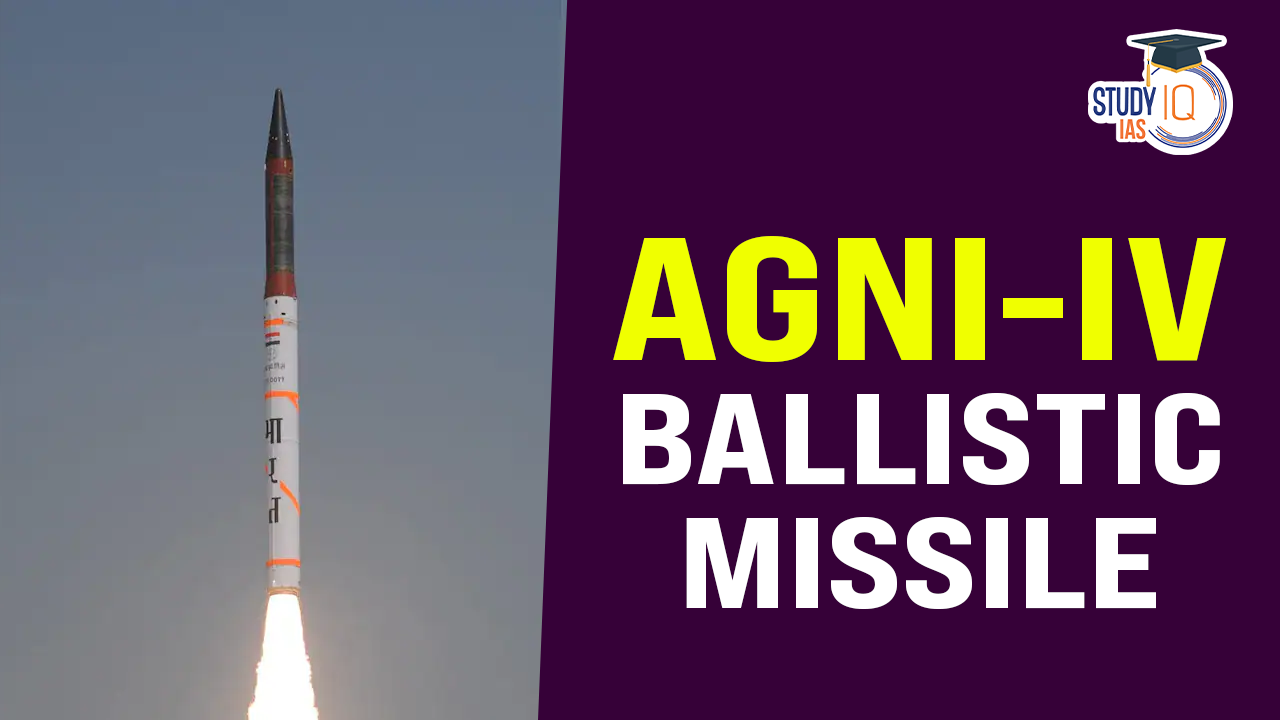Table of Contents
India’s defence sector continues to advance with the recent successful test of the Agni-IV Ballistic Missile on September 6, 2024. This missile, part of India’s nuclear-capable arsenal, represents a key component of the country’s strategic deterrence capabilities. In this comprehensive article, we explore the background, features, significance, recent developments, and how the Agni-IV compares to other missiles in India’s arsenal.
India Tests Nuclear-Capable AGNI IV Missile
- September 2024 Test: The most recent successful test of the Agni-IV missile took place on September 6, 2024, from the Integrated Test Range (ITR) in Chandipur, Odisha. Conducted under the aegis of the Strategic Forces Command (SFC), the test validated all operational and technical parameters, demonstrating the missile’s effectiveness and operational readiness.
- Strategic Message: This recent test comes at a time of heightened regional tensions, serving as a reminder of India’s nuclear capabilities. The successful launch highlights the country’s continuous efforts to modernize and upgrade its strategic assets in response to evolving security challenges, particularly from neighboring nuclear-capable states such as China and Pakistan.
- Other Missile Developments: Earlier in 2024, India also successfully tested the Agni-Prime (Agni-P) missile, a next-generation missile with a range of 1,000 to 2,000 kilometers. Agni-P is designed to offer enhanced precision and rapid deployment, making it a crucial addition to India’s shorter-range missile inventory.
Background of Agni-IV
The Agni-IV is part of India’s Agni series of ballistic missiles, developed by the Defence Research and Development Organisation (DRDO). The series was initiated to enhance India’s strategic strike capability and to develop missiles that could deliver both conventional and nuclear warheads over varying distances. Agni-IV, with its intermediate range, offers a crucial balance between range and mobility, making it a cornerstone of India’s nuclear deterrence doctrine.
The missile program stems from India’s need to counter regional threats and maintain a credible second-strike capability in line with its nuclear doctrine, which emphasizes a No First Use (NFU) policy. Agni-IV is designed to deter adversaries from engaging in conflict by providing a reliable and effective retaliatory strike option.
Key Features of Agni-IV
- Range:
- Agni-IV has an impressive range of approximately 4,000 kilometers. This range allows India to target adversaries well beyond its immediate neighborhood, including regions in Asia and potentially parts of Europe.
- Payload:
- The missile can carry a payload of 1,000 kilograms, which can be configured to deliver both conventional and nuclear warheads, enhancing its strategic flexibility.
- Propulsion System:
- Agni-IV is powered by a two-stage solid rocket propulsion system. Solid fuel provides greater stability, storage efficiency, and rapid deployment capability, which is essential for maintaining readiness.
- Guidance and Accuracy:
- The missile is equipped with a highly sophisticated Ring Laser Gyro-based Inertial Navigation System (RINS) and micro-navigation systems, which ensure precise targeting and a low Circular Error Probability (CEP). This level of accuracy is critical for effective deterrence and operational reliability.
- Mobility:
- Agni-IV is road-mobile, launched from a transporter-erector-launcher (TEL). This mobility increases survivability and enables the missile to be deployed covertly across a variety of terrains, enhancing strategic unpredictability.
Significance of Agni-IV
- Strengthening Second-Strike Capability:
- The Agni-IV plays a pivotal role in India’s second-strike capability, which is central to its nuclear deterrence strategy. A successful retaliatory strike capability is vital to India’s doctrine of No First Use, ensuring that India can effectively respond to a nuclear attack with force.
- Geopolitical Impact:
- The missile provides India with the strategic reach to target critical areas in adversary nations, including China and Pakistan, reinforcing India’s position in the regional power structure. Agni-IV’s extended range places key military and economic hubs within its striking distance, thereby enhancing deterrence.
- Technological Advancements:
- The test and operationalization of Agni-IV demonstrate India’s growing self-reliance in cutting-edge missile technologies. With advancements in guidance systems, propulsion, and accuracy, India is showcasing its ability to develop state-of-the-art strategic weaponry.
- Global Message:
- The successful testing of the Agni-IV is a powerful message to the international community that India possesses the necessary technological prowess and strategic capability to protect its national interests and maintain regional stability.
- Regional Stability:
- India’s deployment of the Agni-IV contributes to regional stability by discouraging adversaries from engaging in aggressive military actions, knowing that India can respond with equal or greater force.
Comparison with Other Missiles in the Agni Series
| Missile | Range | Payload | Propulsion | Guidance System | Primary Role | Status |
|---|---|---|---|---|---|---|
| Agni-I | 700-900 km | 1,000 kg | Single-stage solid propulsion | Advanced inertial guidance with RINS | Short-range ballistic missile (SRBM) targeting neighboring threats like Pakistan | Operational |
| Agni-II | 2,000-3,500 km | 1,000 kg | Two-stage solid propulsion | RINS and GPS for improved accuracy | Medium-range ballistic missile (MRBM), capable of targeting deeper within enemy territory | Operational |
| Agni-III | 3,500-5,000 km | 1,500 kg | Two-stage solid propulsion | Advanced guidance with micro-navigation systems | Intermediate-range ballistic missile (IRBM) covering larger regions like China | Operational |
| Agni-IV | 4,000 km | 1,000 kg | Two-stage solid propulsion | RINS coupled with micro-navigation systems for high precision | Intermediate-range ballistic missile (IRBM) balancing range, mobility, and accuracy | Operational |
| Agni-V | 5,000-8,000 km | 1,500 kg | Three-stage solid propulsion | Highly advanced inertial navigation system with multiple guidance modes | Intercontinental ballistic missile (ICBM) with extended range beyond Asia, capable of striking parts of Europe | Operational, with multiple successful tests |
| Agni-Prime (Agni-P) | 1,000-2,000 km | 1,000 kg | Two-stage solid propulsion | Improved guidance system with higher accuracy | Next-generation missile designed for quick deployment and enhanced accuracy | In development/testing |
Agni-IV Ballistic Missile UPSC
The Agni-IV Ballistic Missile is a critical component of India’s strategic defense architecture, designed to enhance the country’s deterrence capability and maintain regional stability. With its advanced guidance systems, extended range, and road mobility, Agni-IV strengthens India’s ability to respond to threats with precision and reliability.
As India continues to modernize its strategic forces, the Agni-IV and its counterparts in the Agni series play an essential role in ensuring the nation’s security. For UPSC aspirants, understanding the significance of these developments is crucial for grasping the complexities of India’s defense strategies and their impact on national and regional security.
Sharing is caring!


 World Day for International Justice 2025...
World Day for International Justice 2025...
 Anusandhan National Research Foundation ...
Anusandhan National Research Foundation ...
 Places in News for UPSC 2025 for Prelims...
Places in News for UPSC 2025 for Prelims...





















